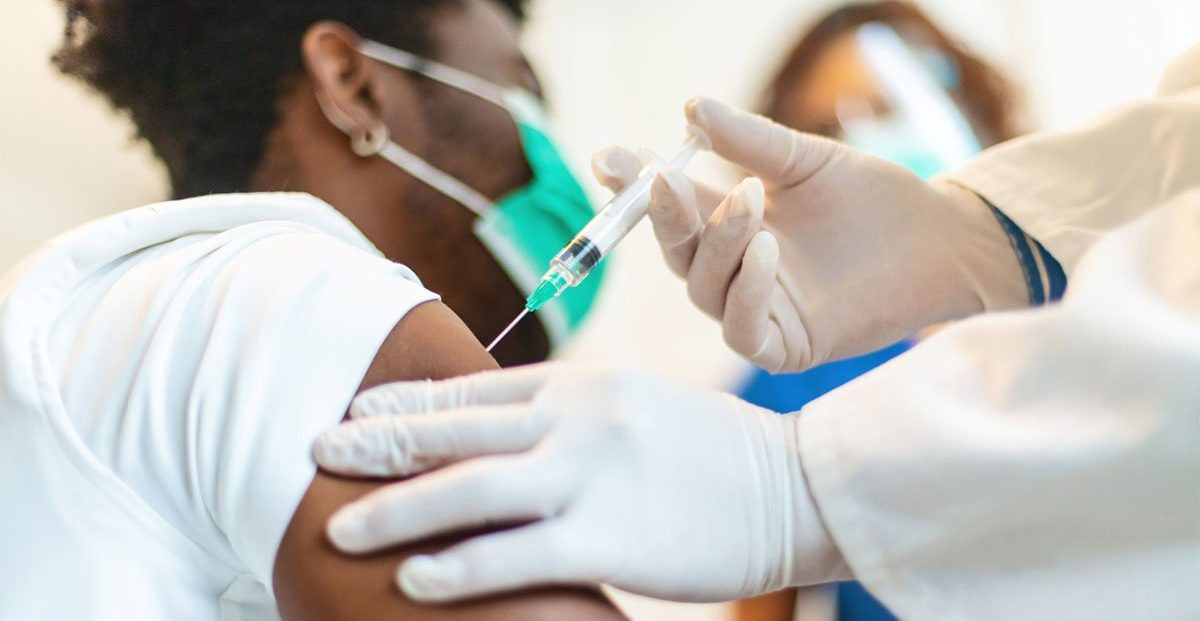The breathtaking speed with which medical science produced the COVID-19 vaccine is considered a technological triumph, but efforts to actually get the vaccine into the arms of people across the country were far less effective. A new study from the University of Minnesota School of Public Health (SPH) makes clear that this pattern held true in Minnesota, where vaccination rates for some racial and ethnic groups lagged behind rates for the state’s white population.
Specifically, the study calculated “time-to-vaccination” outcomes — estimates of the length of time it took to vaccinate 50% of people in different demographic subgroups — which reveal egregious examples of the inequities in Minnesota’s COVID-19 vaccination efforts, including:
- Minnesota underperformed in vaccinating American Indian people: By the end of 2022, just over half (53%) of Minnesota’s American Indian and Alaska Native population had been fully vaccinated against COVID — compared to 65% of white people. Additionally, it took Minnesota 15 months to vaccinate 50% of its American Indian and Alaska Native population — roughly two-and-a-half times longer than it took to reach 50% of the state’s white, Asian, and Native Hawaiian and Pacific Islander population.
- Overall vaccination rates hide disparities: While Black, Latino and white residents of Minnesota had similar COVID-19 vaccination rates by the end of 2022 (61%, 61%, and 65%, respectively), there were stark disparities in time-to-vaccination. While Minnesota fully vaccinated 50% of white residents within six months, it took roughly twice as long (12 months) to fully vaccinate 50% of Black and Latino residents.

Colin Planalp
Other key findings of the study include:
- Minnesota rapidly vaccinated its elderly population: The state was able to fully vaccinate 50% of elderly (age 65 plus) residents within three months of when the first COVID-19 vaccine received emergency-use authorization. And by the end of 2022, almost the entire population of elderly Minnesota residents had been fully vaccinated.
- Minnesota lagged in vaccinating young adults: The state took eight months to fully vaccinate 50% of young adults (ages 19-24) from the time vaccines were first authorized. By the end of 2022, only about two-thirds of young adults were fully vaccinated — meaning that almost one-third were not fully vaccinated.
- Young adults experienced more vaccination disparities: At the end of 2022, there were wide disparities in vaccination rates across young adults of different racial and ethnic groups; 49% of American Indian and Alaska Native young adults were fully vaccinated compared to 84% of Asian and Native Hawaiian and Pacific Islander young adults. There also were substantial differences in time-to-vaccination. While Minnesota fully vaccinated 50% of Asian and Native Hawaiian and Pacific Islander young adults within five months, the state still hadn’t reached 50% of American Indian and Alaska Native young adults by the end of 2022 — roughly two years after COVID vaccines first became available.
- Minnesota performed best in vaccinating urban/suburban areas: At the end of 2022, almost three-quarters (72%) of Minnesota’s urban and suburban populations were fully vaccinated against COVID-19, compared to just over half of people in rural, exurban, and small-town communities (53%, 55% and 59%, respectively). Similarly, Minnesota was faster to vaccinate people in urban and suburban communities. The state reached 50% of people in urban and suburban communities within five months, but it took 12 months to reach people in rural and exurban communities, and nine months for people in small towns.
“Disparities in the distribution of COVID-19 vaccines highlight the shortcomings and pervasive inequities in the U.S. health care and public health systems,” says SPH’s Colin Planalp, the study’s lead author. “Identifying these disparities, especially the glaring differences in the time it took to vaccinate various populations across the state, can be a useful tool for policy makers and public health officials in addressing future health emergencies.”
To conduct the study, researchers from SPH’s State Health Access Data Assistance Center (SHADAC) analyzed data from the Minnesota Electronic Health Record Consortium, which includes the Minnesota Department of Health, several large health care providers, and other organizations dedicated to measuring and improving health care quality in Minnesota.

